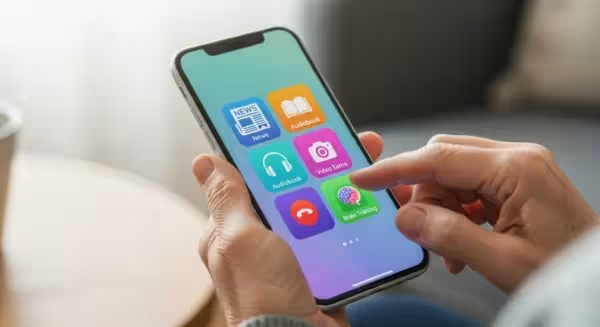
Understanding the Health Benefits (and Any Risks)
Brain-training apps are designed to target and stimulate specific cognitive functions through a series of games and puzzles. This practice is often referred to as cognitive training. The goal is to challenge your brain in novel ways, which proponents believe can help strengthen neural pathways and improve mental agility. Let’s look at the potential benefits more closely.
Potential Cognitive Benefits
Most brain-training programs focus on several key areas of cognition. By consistently engaging with these exercises, some users may notice improvements in:
- Memory: Many games are designed to challenge your short-term and working memory. This might involve remembering a sequence of items, recalling the location of objects, or matching pairs. These exercises act as digital memory boosters, helping you practice the mental muscle of recall.
- Attention and Focus: In a world full of distractions, the ability to concentrate is a valuable skill. Apps often include tasks that require you to filter out irrelevant information and focus on a specific goal, which can help sharpen your attention span over time.
- Problem-Solving: From logic puzzles to strategic planning games, these apps can challenge your ability to think critically and find creative solutions. This skill, often called executive function, is crucial for managing daily tasks and making sound decisions.
- Processing Speed: Some games are timed, encouraging you to think and react more quickly. While speed isn’t everything, improving how fast your brain processes information can make everyday activities, like following a conversation or driving, feel easier.
- Mental Flexibility: The ability to switch between different tasks or ways of thinking is another key cognitive skill. Brain-training games often require you to adapt your strategy as the rules change, which can help keep your mind nimble.
Understanding the Risks and Limitations
While these apps can be a fun and engaging part of a healthy lifestyle, it is crucial to approach them with realistic expectations and an awareness of their limitations. Health and safety come first, and that includes understanding what these apps can and cannot do.
- They Are Not a Cure: It is extremely important to understand that brain-training apps are not a medical treatment. They cannot prevent, cure, or reverse Alzheimer’s disease, dementia, or any other form of cognitive decline. These are serious medical conditions that require diagnosis and management by a qualified healthcare professional.
- The “Teaching to the Test” Effect: A primary debate among scientists is whether the skills learned in a brain game transfer to the real world. For example, getting very good at a memory game on an app might just make you better at that specific game, without necessarily improving your ability to remember your grocery list or where you left your keys. While some transfer of skills is possible, it is not guaranteed.
- Screen Fatigue and Eye Strain: Spending too much time looking at a smartphone or tablet screen can lead to eye strain, headaches, and dry eyes. It is important to use these apps in moderation, take frequent breaks, and ensure the lighting in your room is adequate.
- Frustration and Anxiety: Some games can be challenging, and if you find yourself becoming frustrated or stressed, it may be counterproductive. The goal is gentle stimulation, not a source of anxiety. If an app is making you feel bad, it is okay to stop using it.
- Cost and Subscriptions: Many popular brain-training apps operate on a subscription model. While they may offer a free trial, full access can be costly. Be cautious of apps that push you into expensive, automatically renewing subscriptions.
In summary, think of brain-training apps as you would a crossword puzzle or a game of Sudoku—a pleasant and stimulating mental activity. They are one component of a brain-healthy lifestyle, which should also include physical exercise, a balanced diet, social engagement, and quality sleep.















